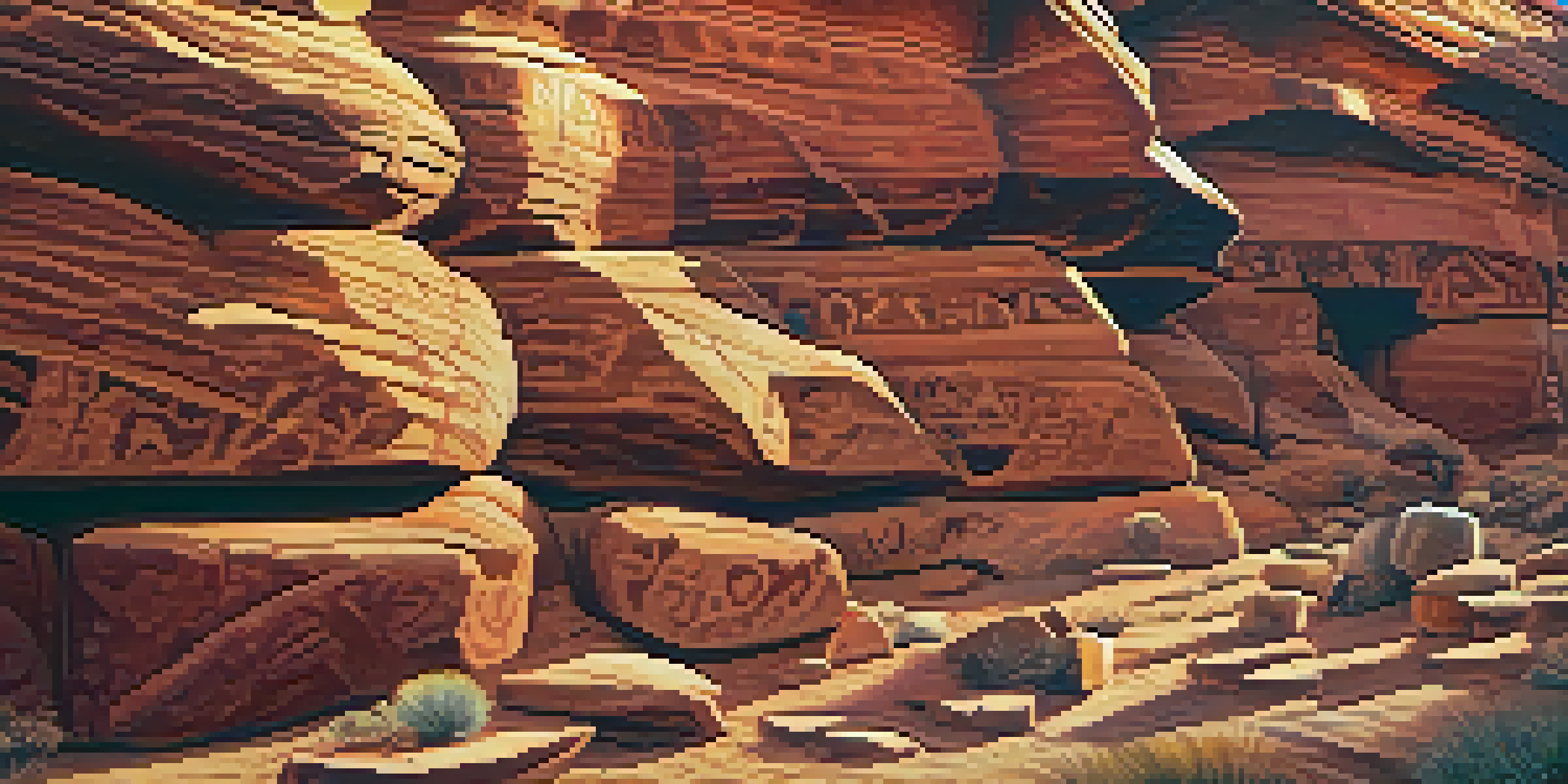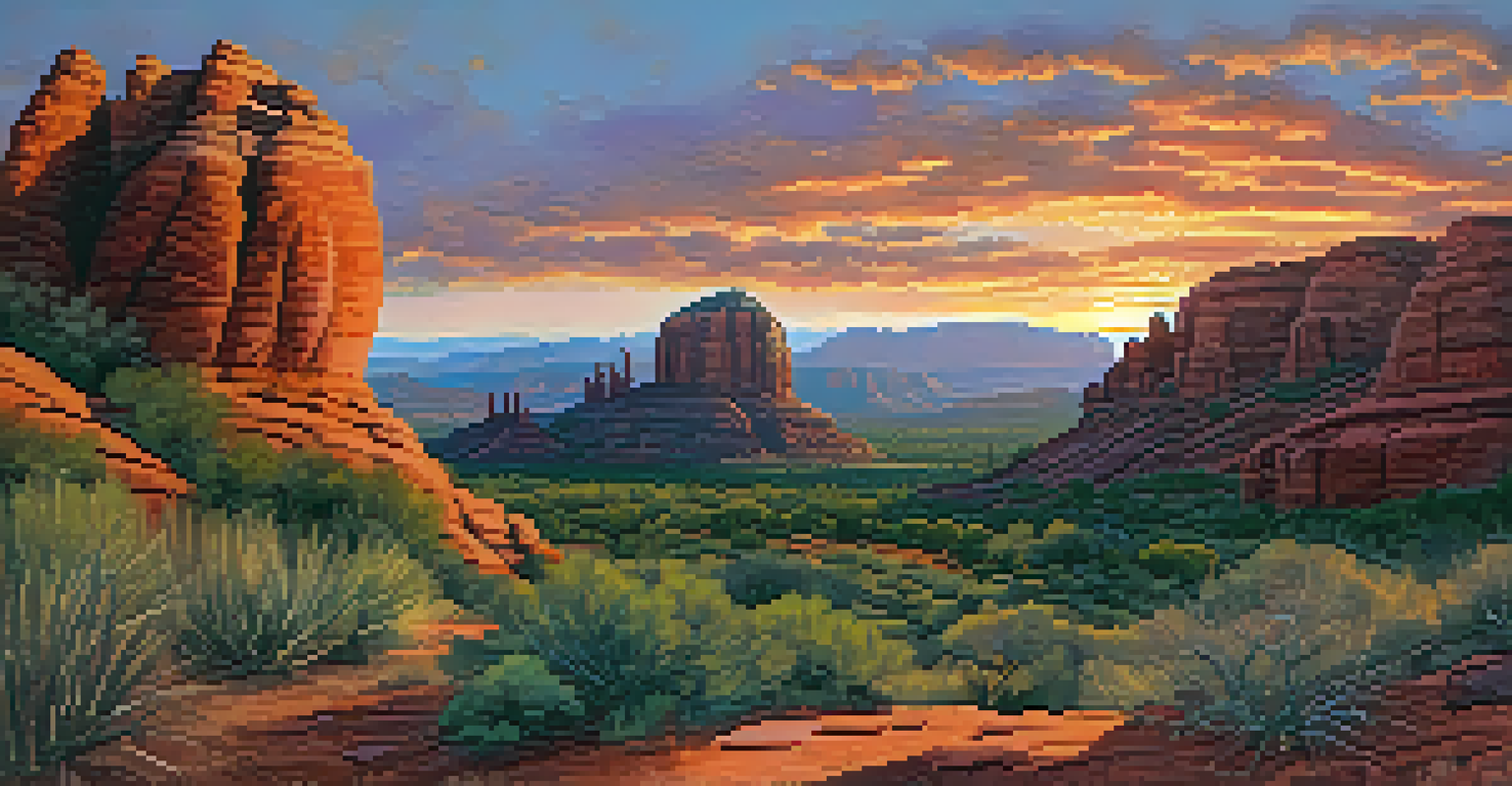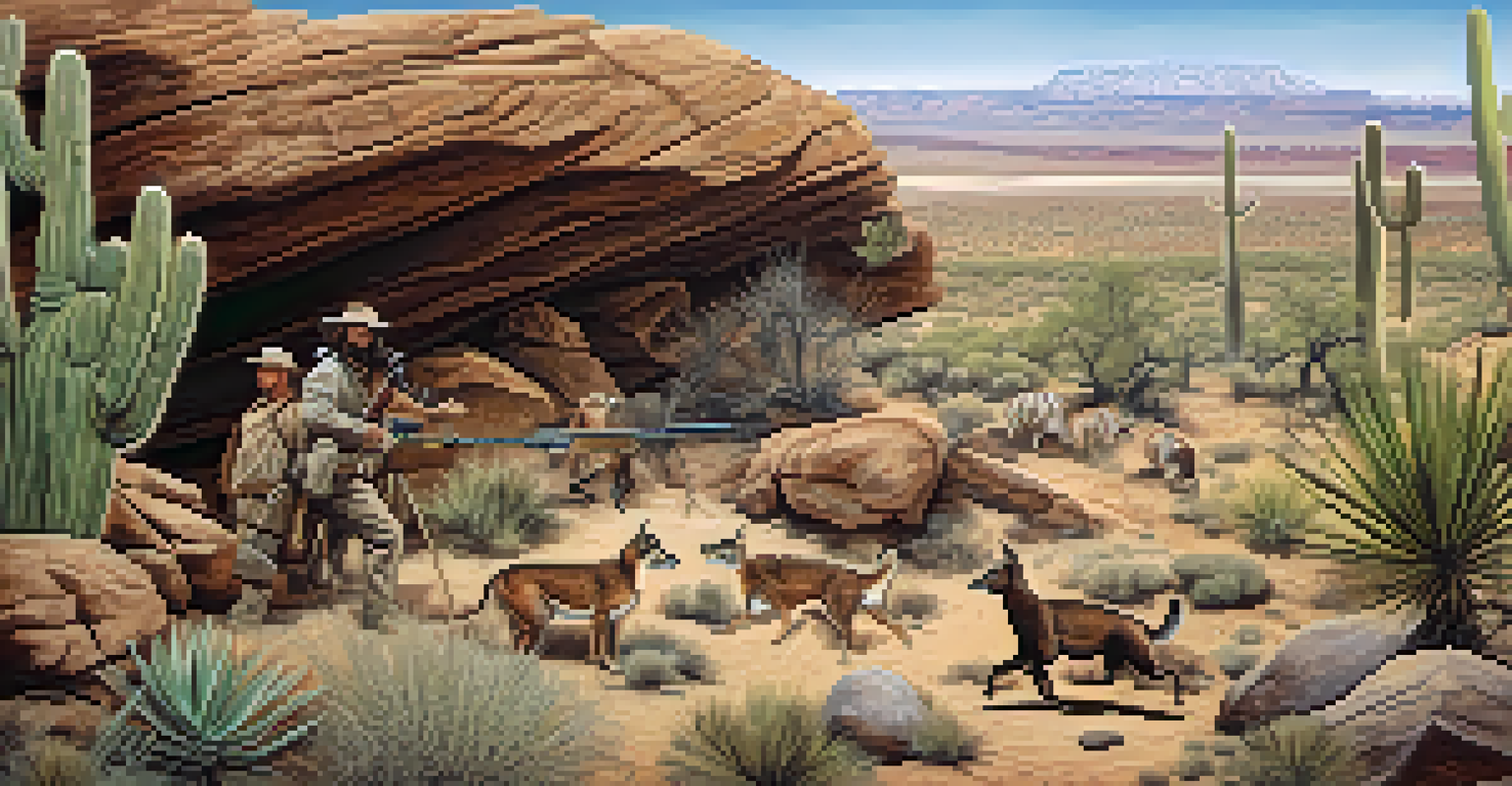The Significance of Sedona's Petroglyphs in Cultural History

Understanding Sedona's Petroglyphs: A Glimpse into the Past
Sedona's petroglyphs are more than just ancient carvings; they are a window into the lives of the Indigenous peoples who inhabited the area. These symbols, etched into the red rock, tell stories of rituals, spiritual beliefs, and daily life. By studying these images, we can gain a deeper understanding of the cultural practices of these early inhabitants.
The past is never dead. It's not even past.
The petroglyphs date back thousands of years, with many believed to have been created by the Sinagua and other Native American tribes. Each carving represents a unique perspective on their environment, showcasing their connection to nature and the cosmos. For example, many symbols depict animals that were significant in their mythology, highlighting the importance of wildlife in their daily existence.
As we interpret these ancient artworks, we not only appreciate their aesthetic value but also recognize their role as historical documents. They serve as reminders of the rich tapestry of human experience and the stories that shaped the region. This understanding fosters respect for the rich cultural heritage of Sedona and its Indigenous peoples.
The Role of Petroglyphs in Indigenous Culture
Petroglyphs served multiple purposes in Indigenous cultures, functioning as both art and a form of communication. They were used to convey messages, mark territory, or commemorate significant events. For instance, some petroglyphs depict hunting scenes, which could signify successful hunts or serve as a teaching tool for younger generations.

Moreover, these carvings often held spiritual significance. Many Indigenous tribes believed that the symbols connected them to their ancestors and the spiritual realm. The act of creating these petroglyphs was not just a form of artistic expression but also a means of honoring their heritage and maintaining a connection with their past.
Cultural Heritage of Petroglyphs
Sedona's petroglyphs offer a unique glimpse into the spiritual beliefs, daily life, and cultural practices of Indigenous peoples.
In today’s context, these ancient images continue to inspire and educate. They remind us of the importance of storytelling in preserving culture and history. By understanding the role of petroglyphs in Indigenous life, we can appreciate their enduring legacy and the lessons they impart.
Petroglyphs as Historical Markers
The location and design of petroglyphs often provide valuable insights into the historical movements and migrations of Indigenous peoples. Archaeologists study these markings to trace the paths taken by tribes and understand their interactions with the environment. In Sedona, certain petroglyphs reveal information about trade routes and seasonal migrations.
Art is the most beautiful of all lies; it is a lie that tells the truth.
Additionally, these carvings reflect the changes in the environment over time. For example, the presence of water-related symbols may indicate ancient water sources that were crucial for survival. By analyzing these symbols, researchers can reconstruct the ecological history of the region and how it influenced Indigenous lifestyles.
Understanding petroglyphs as historical markers allows us to appreciate the dynamic relationship between people and their environment. They serve as a testament to the adaptability and resilience of Indigenous cultures throughout history.
Preserving Sedona's Petroglyphs for Future Generations
As we delve into the significance of Sedona's petroglyphs, the importance of preservation becomes clear. Many of these ancient carvings face threats from environmental factors and human activities, such as vandalism and urban development. Protecting these sites is crucial to maintaining the historical and cultural integrity they represent.
Various organizations and local Indigenous communities are actively working to safeguard these petroglyphs. Initiatives include educational programs that raise awareness about their significance and promote respectful visitation. By fostering a sense of stewardship among visitors and residents alike, we can ensure the longevity of these cultural treasures.
Preservation Challenges Ahead
Environmental threats and tourism pose significant challenges to the preservation of these ancient carvings, highlighting the need for responsible stewardship.
Preservation efforts not only benefit the petroglyphs but also enrich our understanding of Indigenous cultures. They allow future generations to connect with their heritage and explore the stories embedded in these ancient artworks.
Tourism and Its Impact on Petroglyphs
Sedona is a popular tourist destination, attracting visitors from around the globe who come to marvel at its stunning landscapes and rich cultural history. While tourism can provide economic benefits, it also presents challenges for the preservation of petroglyphs. Increased foot traffic can lead to erosion and damage, making responsible tourism practices essential.
To mitigate these impacts, local authorities have implemented guidelines for visitors. These include staying on designated paths and respecting the integrity of the petroglyph sites. Educating tourists about the cultural significance of these carvings can foster a sense of respect and responsibility towards preserving them.
Balancing the interests of tourism with the need for preservation is crucial. When visitors appreciate the historical importance of petroglyphs, they can contribute positively to their conservation, ensuring that these irreplaceable cultural artifacts endure for future exploration.
The Spiritual Connection of Petroglyphs
For many Indigenous communities, petroglyphs are not just historical artifacts; they are imbued with deep spiritual significance. These carvings often represent beliefs, rituals, and the connection between the physical and spiritual worlds. Understanding this spiritual aspect adds another layer to our appreciation of these ancient symbols.
Many petroglyphs depict ceremonial practices or deities that were integral to the tribes' spiritual beliefs. For instance, certain symbols may represent the changing seasons or important life events, reflecting the community's relationship with the universe. This spiritual connection emphasizes the role of art as a means of expressing and preserving cultural identity.
Spiritual Significance in Art
Many Indigenous communities view petroglyphs as profound spiritual symbols, linking their cultural identity to the physical and spiritual realms.
Recognizing the spiritual dimensions of petroglyphs enriches our understanding of Indigenous cultures. It reminds us that art and spirituality are often intertwined, offering insights into how these communities view the world around them.
Modern Interpretations of Sedona's Petroglyphs
As interest in Sedona's petroglyphs grows, modern interpretations and artistic expressions are emerging. Contemporary artists often draw inspiration from these ancient symbols, creating new works that bridge the past and present. This fusion of old and new can spark conversations about cultural identity and continuity.
Additionally, these interpretations can challenge us to think critically about how we view Indigenous cultures today. They invite a reinterpretation of traditional narratives and encourage a broader understanding of cultural heritage. By engaging with these modern takes, we can appreciate the evolving nature of cultural expression.

Through modern interpretations, Sedona's petroglyphs continue to inspire creativity and dialogue. They serve as a reminder that culture is not static; it evolves and adapts while honoring its origins.